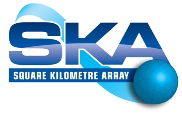Speaker
Dr
Francois Viallefond
(OBSPM/CNRS)
Description
SDMv2 is an instance of a data model intended to represent the data produced for a broad variety of types of radio-telescopes (ref. presentation given at CALIM 2010).
The model is still under development on several fronts, amongst them a formalization of its theory.
Using the use-case of EMBRACE I'll explain why it has been necessary to go a step forward beyond the standard relational data model.
The data model involves the definition of data-types.
I will describe how some of these are elaborated to implement their algebras.
Building logical structures and their associated algebraic structures leads, de facto, to the definition of a domain specific language.
For our purpose this language is dedicated at the meta-model level to experimental physics through the concepts of physical quantities and measurements.
Profiling the concepts that we need in radio astronomy leads to the theory, an assembly of data models.
The net result with this approach is:
a) to offer the possibility to develop highly expressive codes using a concise terminology
b) to make these codes type-safe and thus providing very robust implementations, and
c) to achieve good efficiency at run-time.
These different aspects are essential to make easier the maintainability of these codes.
The formalization highlights the properties of the structures and the different ways they can be glued together.
This should help when optimizing these codes to specific computer architectures in order to maximize their performances in different infrastructure environments with problems of different sizes.
This work is done within the context of the ALMA CIPT and taking the EMBRACE prototype as a use-case for experimentation.
Primary author
Dr
Francois Viallefond
(OBSPM/CNRS)

